Chai Nabat is the cure for all, every Iranian mother has told their children that Chai Nabat, or tea with rock candy can cure all their discomforts. Especially if you have a stomachache in Iran, everyone will tell you that you have Sardi, and you need to drink some Chai Nabat to cure it.
The recipe is very simple. Make black tea and pair it with rock candy infused with saffron. But I’m going to teach you how to elevate Chai Nabat to a ritual deserving of the moniker Persian tea ceremony. It can be had for breakfast, as a late-afternoon snack, or even as a midday meal.
Table of Contents
Chai Nabat in the Persian Landscape
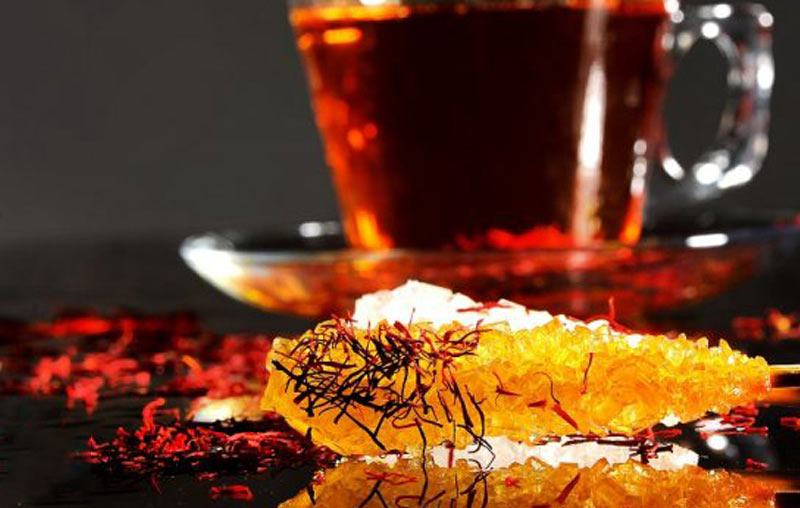
Chai Nabat can be enjoyed in a peaceful garden in Kashan, a bustling bazaar in Tehran, a quaint teahouse in Shiraz, or a seaside café in Bandar Abbas. At the 4,811-meter summit of Mount Alam Kuh or on the sun-baked sands of the Dasht-e Kavir desert, you can brew Chai Nabat.
I’ll take you to the Iranian Cafes, heaven for thinkers, creative types, and anyone in need of comfort. I’ll take you to a café with a simple menu consisting of tea, Nabat, and maybe a plate of dessert. Buckle up and relish the journey to the core of Persian tea tradition.
What Do You Need to Make Chai Nabat?

Black Tea:
Tea is the foundation of Chai Nabat. Persian black tea is recognized for its strong flavor and scent. Unlike some other teas, Persian tea is often brewed to a rich amber color and served in small, delicate glasses. Add a Ghoori or Persian teapot and Samovar and you get the best quality of tea for your Chai Nabat.
Nabat (Rock Candy):

Chai Nabat’s sweet soul is nabat, also known as rock candy. Traditionally, it is created by dissolving sugar in water, adding a touch of saffron for color and flavor, and leaving it to crystallize into lovely amber shards. Nabat not only sweetens the tea but also provides a mild saffron flavor, which improves the whole experience. It is available in golden or simple clear form.
Boiling Water:
Water is the essence of tea. To get the greatest flavor, brew using fresh, pure water. Avoid using distilled water because it may make the tea taste flat. Instead, use spring or filtered tap water.
How to Brew the Perfect Chai Nabat?
1. Boil the Water: Begin by heating fresh water. The temperature should be just below boiling, around 90-95°C (194-203°F). For the best result use a traditional Samovar.
2. To make the tea, place 1 teaspoon of black tea leaves in each cup in a teapot. Pour the heated water over the leaves and allow to brew for 3-4 minutes. If you have Samovar, put the teapot on top to stay warm and ready.
3. Serve with Nabat: Pour the tea into tiny cups and garnish with saffron rock candy on the side. To adjust the sweetness of the tea, dip the nabat into it. Some people even dissolve the rock candy completely but that might be too sweet for most people’s taste.
Is Chai Nabat Vegan?
Chai Nabat is naturally vegan because it contains plant-based ingredients such as black tea and rock candy. For a unique touch, try adding a dash of plant-based milk, such as almond or oat milk. The procedure stays the same: prepare the tea, serve it with Nabat, and savor a vegan treat.
Variations of Chai Nabat
Rose Chai Nabat
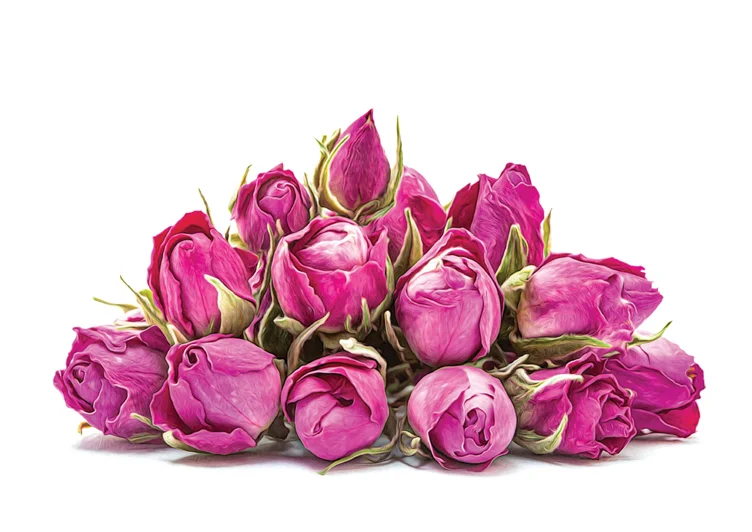
A popular variant on Chai Nabat is to add a few dried rose petals to the tea leaves before brewing. This lends a floral fragrance and an air of sophistication to the tea. Serve it with rose-flavored rock candy if available for a fragrant treat.
Cardamom Chai Nabat
For a spicier variation, add a few crushed cardamom pods to the tea leaves. Cardamom balances black tea’s powerful taste and nabat’s sweetness, resulting in a great flavor balance.
Best Side Dishes for Chai Nabat
Baklava:
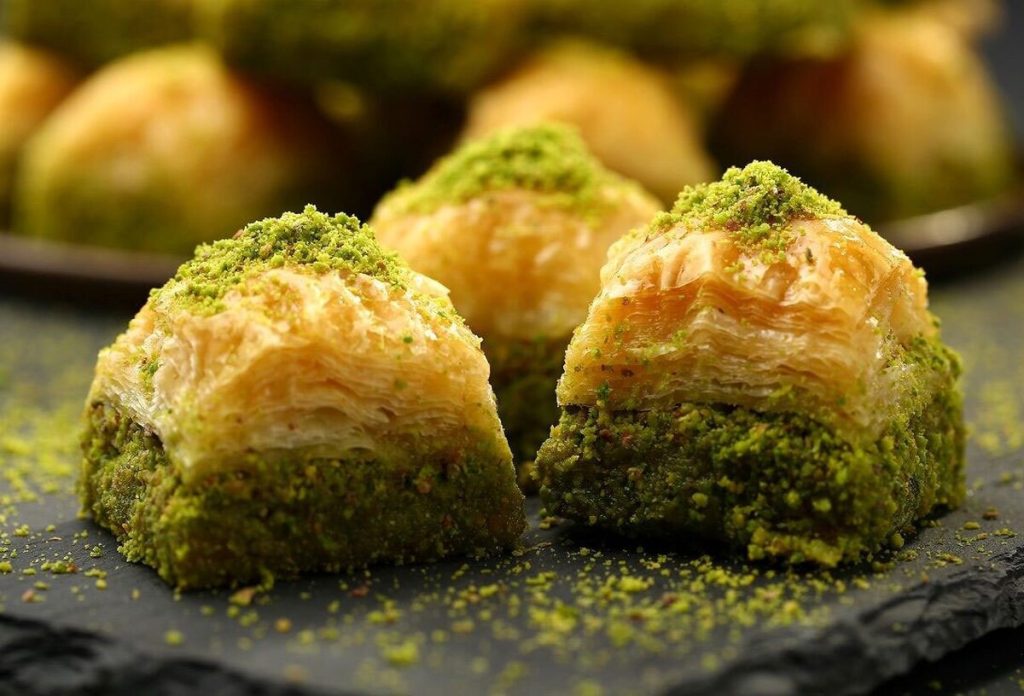
This rich, sweet pastry formed of layers of dough sheets packed with chopped nuts and sweetened with syrup or honey is an excellent accompaniment to the powerful, aromatic tea.
Ghotab:
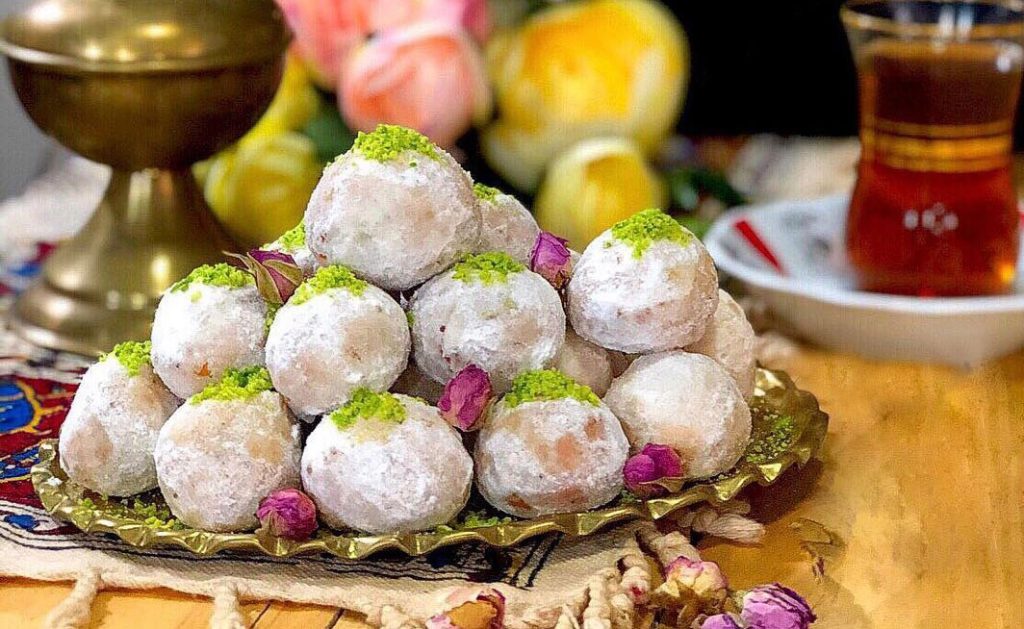
A classic Persian pastry from Yazd filled with almonds, powdered sugar, and cardamom that adds a wonderful crunch to the smoothness of Chai Nabat.
Zoolbia and Bamieh:
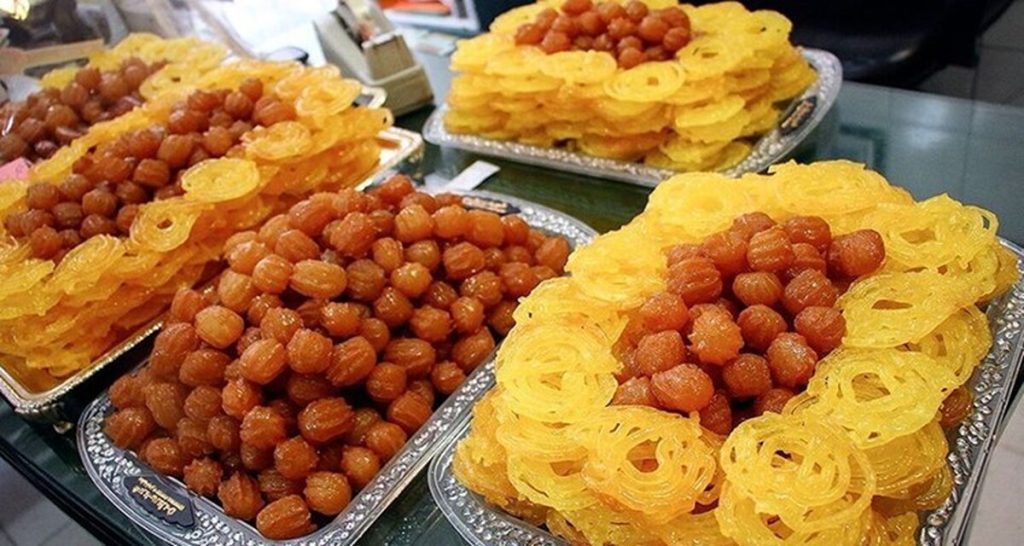
These deep-fried sweets coated in syrup are famous during Ramadan, but they may be eaten all year with a glass of tea. Zoolbia is a crispy, lattice-like dessert, while Bamieh is miniature, syrup-coated doughnuts.
The Ritual of Enjoying Chai Nabat
The enjoyment of Chai Nabat is an art form in itself. Here are a few tips to make the most of this delightful experience:
1. Set the Scene: Establish a peaceful environment. If available, use a traditional Persian tea set with small, delicate glasses to highlight the tea’s deep amber color.
2. Slowly sip and cherish each moment. The procedure of dipping the Nabat into the tea and allowing it to dissolve is intended to be unhurried and calming.
3. Share the Experience: Chai Nabat is best-savored with good company. Tea encourages connection and thought, whether with family, friends or in a quiet time of reflection.







Leave a Comment